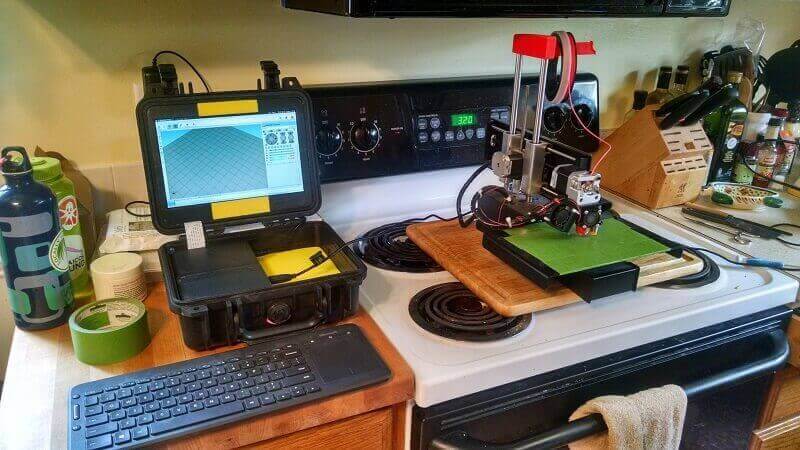Looking for a sturdy, open source field computer that’s capable of basic tasks and adaptable to anything? Feast your eyes on the BeagleBox 2.
Conducting scientific research outside of a lab can be pretty difficult. Just imagine all that prolonged exposure to the elements — sun, wind, rain, or sea spray (if you’re on a boat). And then imagine trying to operate a laptop in the middle of it.
Because of course, field equipment is often controlled via a computer, and data entry also requires a computer, so you need mobile equipment that can withstand repeated punishment out in the field. For graduate students and scientists on tight funding budgets, this poses a dilemma.
Enter the BeagleBox 2. Rather than taking your primary computer out into the field, the BeagleBox provides a no-frills option that is cheap to build, modify and upgrade. Not only is the case 3D printed, but it can also be used to operate a 3D printer like the PrintrBot Simple, too!
The BeagleBox 2 is a labor of love by deep-sea biologist Andrew Thaler, and he’s made a retroactive change regarding the origins of the name, honoring no less a personage than Charles Darwin:
“I named the first BeagleBox after the BeagleBone Black used to power it. Since the BeagleBox 2 no longer uses that SBC (single board computer), I’m going to declare that all future iterations of the BeagleBox are named for the HMS Beagle, in honor of one of the greatest field biologists of all time.”

BeagleBox 2 is One Tough Mother
With single board computers like the BeagleBone, Raspberry Pi, and Pine64 becoming cheaper and more powerful by the day, the benefit of the BeagleBox is that it can be constantly upgraded.
The first BeagleBox was a proof-of-concept prototype running Linux and LXDE on a BeagleBone Black. The case is basic and supports a 4-port USB hub and will fit most smaller, Raspberry Pi-size SBCs (single board computer).
The BeagleBox 2 has been totally redesigned with an easy to assemble 3D printable case that’s tougher and allows for greater functionality. It supports a 4-post USB hub, plus audio, ethernet, and an external power port. It also runs the Ubuntu Linux operating system on a Pine64 SCB.
Both BeagleBoxes can handle 12V DC power, which allows users to hook up to external power sources when necessary.
So why is this preferable to a cheap, disposable computer, like a Chromebook? According to Thaler:
“It’s already housed. When working on a boat, you don’t need to be extra cautious transferring gear or personal, don’t need to panic when it rains, don’t need to double check your backpack when you take the inevitable mud-fueled spill into the marsh. When the case is closed, the system is waterproof in one of the toughest field boxes on the market.”
Wanna build and modify your own BeagleBox? Visit the GitHub repository for the full bill of materials, STL files, and instructions.
(Via: Southern Fried Science)

License: The text of "BeagleBox 2: Tough as Nails 3D Printed Field Computer" by All3DP is licensed under a Creative Commons Attribution 4.0 International License.